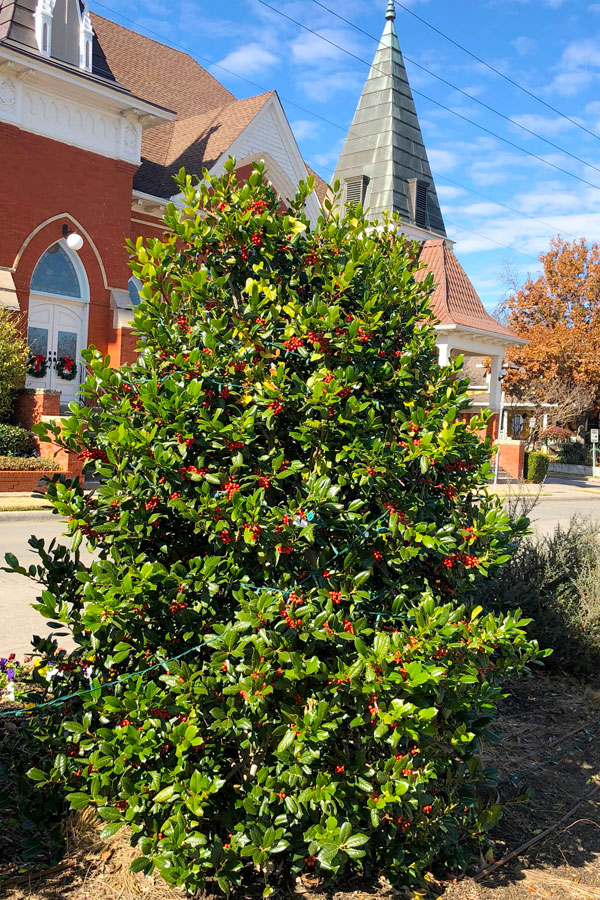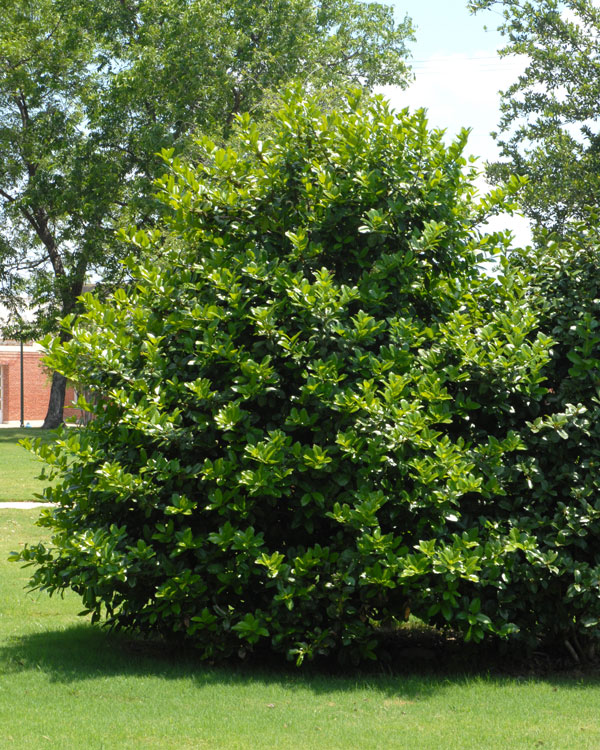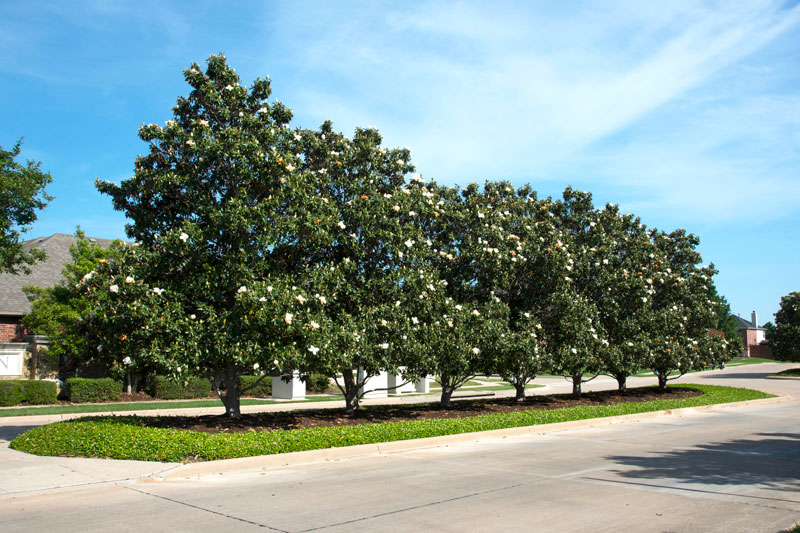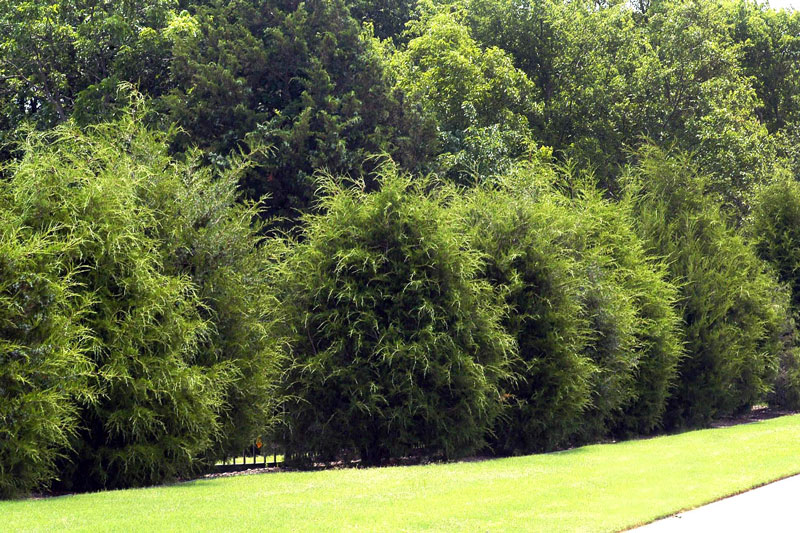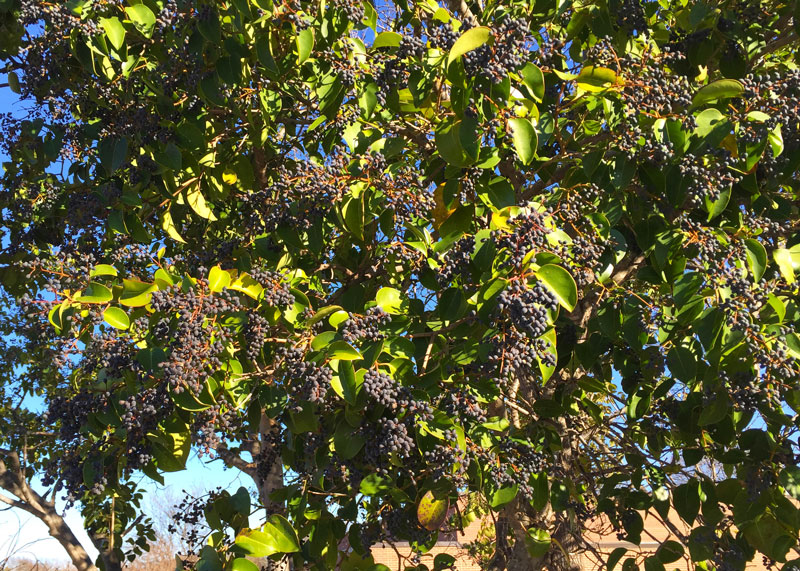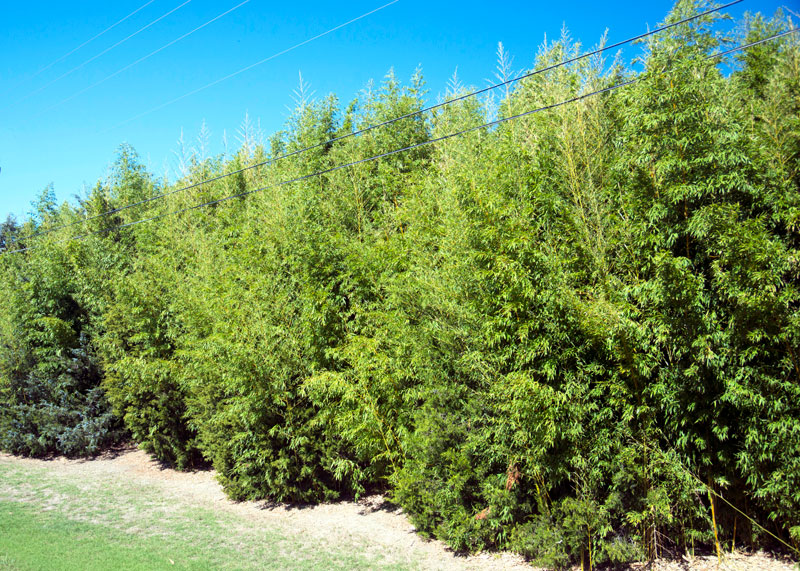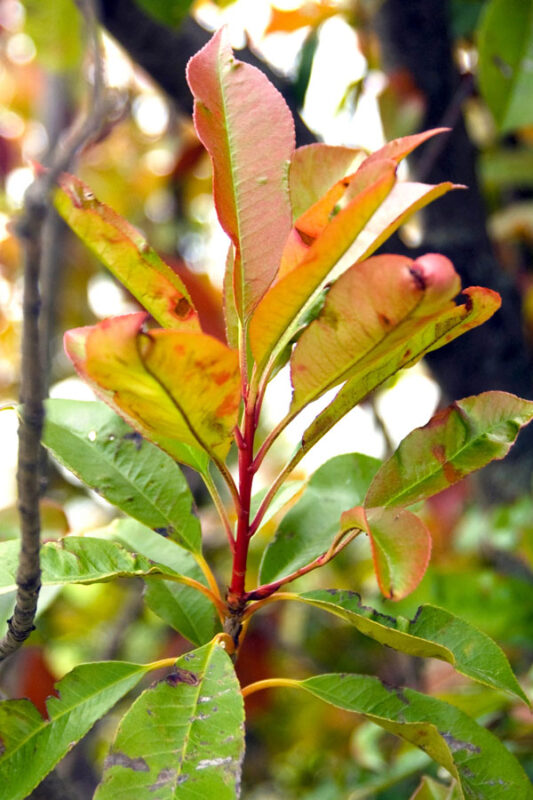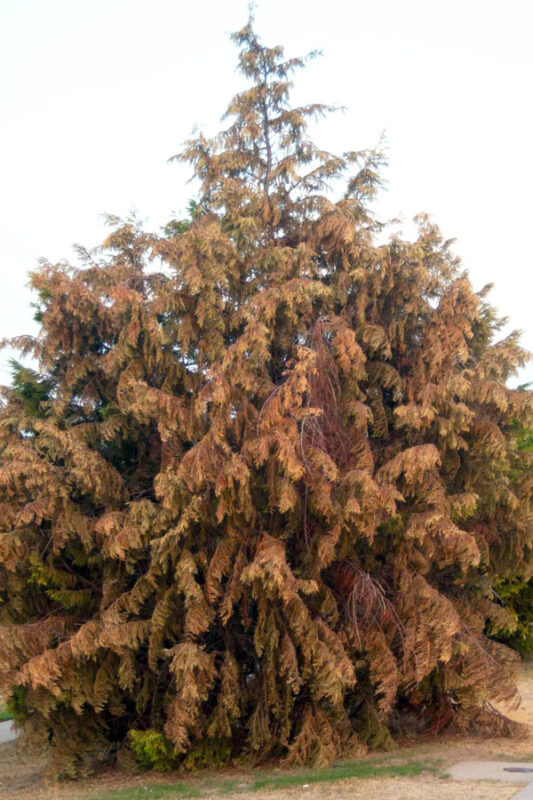Tall Screens for Unsightly Views
There are times when you want a tall plant to screen views and noises from streets and properties adjacent to parts of your landscape. Here is a short list of some of the best. These are suited to almost all of the state, but, as always, I’d recommend that you ask a second opinion from a Texas Certified Nursery Professional in your own city.
Good choices for screening
These are my go-to plants for tall screens. Not surprisingly, the list is made up of hollies. All images are clickable for larger views.
• Nellie R. Stevens holly. I’ve grown this beautiful shrub since 1970, and I can’t imagine my landscape without it. It grows at a decent pace to a height of 15 to 18 feet (taller with age and perfect conditions), and it bears large red berries that persist all winter. I plant mine about two-thirds as far apart as I’ll be letting them grow (10 feet apart, for example, if they’ll be growing 15 feet tall). It’s available in a wide range of sizes in nurseries. Sun or shade.
• Mary Nell holly and its “children.” In my experience, this group of larger-leafed hollies grows somewhat more slowly than Nellie R. Stevens, but the plants make spectacular screens. This group includes Oakland hollies (see photo above), probably tops on the list, and they make stately evergreen shrubs to 12 to 18 feet tall. Sun or shade.
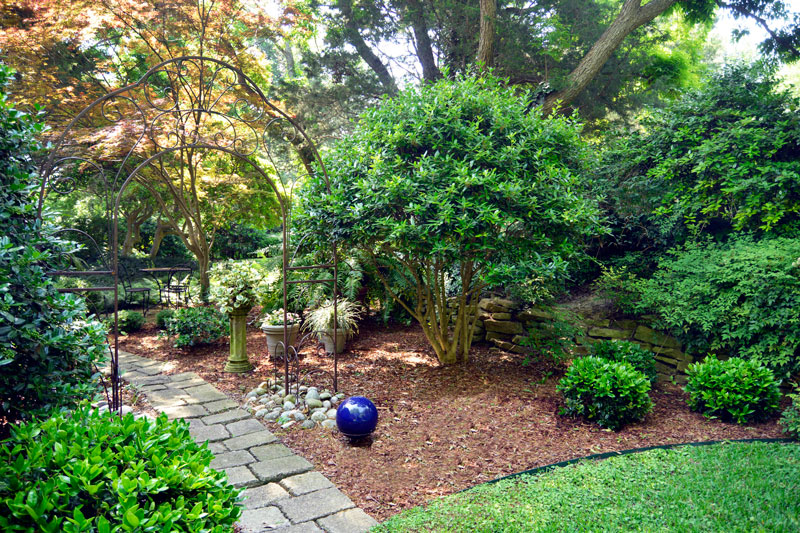
• Willowleaf holly, also known as Needlepoint holly. Don’t let that name scare you, however. These plants have only one spine at the end of each leaf, and they aren’t especially threatening. I have them along walks and near faucets, for example. It’s a selection of Burford holly, and it has a much more relaxed look and feel. All plants bear multitudes of bright red berries all winter. It grows to 12 to 15 ft. tall and 10 ft. wide. Sun or shade.
If you need something taller…
What if the hollies just don’t get tall enough? What other choices might you have? Warning: these trees require adequate real estate.
• Little Gem southern magnolia is tops of this list. They grow to 25 or 30 ft. tall and 20 to 25 ft. wide. In all respects, including leaf and flower size, they’re about half the size of standard southern magnolias. If you have the ground space to accommodate them, these make a stunning tall screen. They’re favorites with professional landscape designers.
• Eastern redcedar junipers are native to the eastern half of the state, and they’re adapted just about anywhere that the sun shines all day. They grow to 35 to 40 ft. tall and 30 to 35 ft. wide. Don’t crowd them or they’ll lose lower branches. If you need a screen where they grow natively, they’re a great way to get privacy and still keep things looking natural. Plant them in erratic patterns rather than straight rows if you have ample space.
Plants to avoid at all cost…
These are the plants that bring serious problems – as I will note.
• Japanese ligustrum (Japanese privet). Horrifically invasive because of the large clusters of fruit that are treasured by birds that devour, then “plant” them. Also not reliably winter-hardy in northern half of the state. Amur River privet is also at the top of the invasive plant list.
• Golden bamboo. There is no effective way to stop the spread of this awful grass other than to avoid planting it in the first place. It spreads from yard to yard, engulfing all vegetation in the process. I won’t relent on this one – it mustn’t be planted. (Granted there are types of clumping bamboos that aren’t aggressive growers, but most of them are only winter-hardy in South Texas. Talk to your nurseryman.)
• Redtip photinia. We first began to see Entomosporium fungal leaf spot killing redtips back in the 1980s, and now it’s taking out entire city blocks behind alleys. It starts as small maroon “freckles,” and it spreads until it causes leaves to turn yellow, then white, then dried and brown. Not all of a given plant will be impacted at the same time. There are no preventive sprays, nor are there dependable cures. Above all, don’t fill holes in your plantings with more redtips. They, too, will succumb.
• Leyland cypress, Arizona cypress, and Italian cypress. All are susceptible to Seiridium canker. The disease kills the plants branch by branch. There is no prevention and there is no cure. Just don’t plant them.

